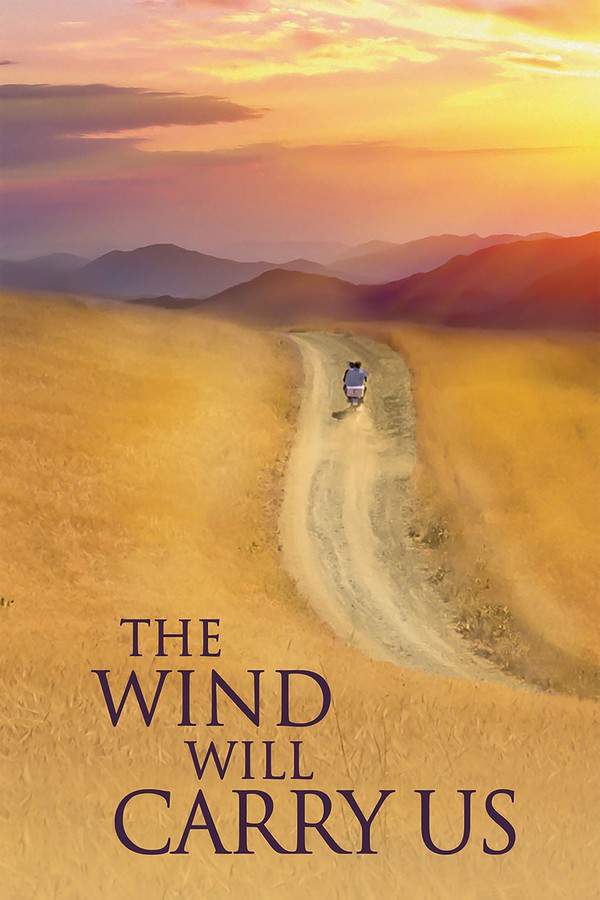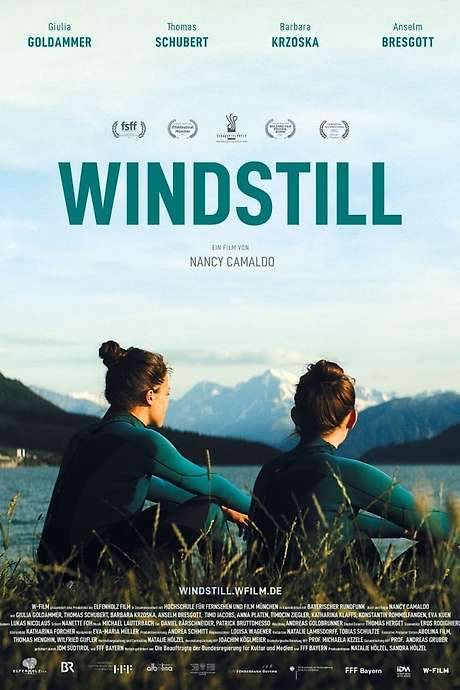The Wind Will Carry Us 2000

A group of city dwellers journeys to a remote village, posing as technicians with a specific purpose. They secretly observe the community while awaiting the death of a very old woman. Amidst the quiet tension, an unexpected connection develops between the group’s leader and a local girl. Their interaction explores cultural differences and reveals a shared humanity in their contrasting lifestyles, creating a touching and contemplative experience.
Does The Wind Will Carry Us have end credit scenes?
No!
The Wind Will Carry Us does not have end credit scenes. You can leave when the credits roll.
Meet the Full Cast and Actors of The Wind Will Carry Us
Explore the complete cast of The Wind Will Carry Us, including both lead and supporting actors. Learn who plays each character, discover their past roles and achievements, and find out what makes this ensemble cast stand out in the world of film and television.
No actors found
External Links and Streaming Options
Discover where to watch The Wind Will Carry Us online, including streaming platforms, rental options, and official sources. Compare reviews, ratings, and in-depth movie information across sites like IMDb, TMDb, Wikipedia or Rotten Tomatoes.
Ratings and Reviews for The Wind Will Carry Us
See how The Wind Will Carry Us is rated across major platforms like IMDb, Metacritic, and TMDb. Compare audience scores and critic reviews to understand where The Wind Will Carry Us stands among top-rated movies in its genre.

87
Metascore
7.7
User Score


%
TOMATOMETER

0%
User Score

7.4 /10
IMDb Rating

71
%
User Score
Take the Ultimate The Wind Will Carry Us Movie Quiz
Challenge your knowledge of The Wind Will Carry Us with this fun and interactive movie quiz. Test yourself on key plot points, iconic characters, hidden details, and memorable moments to see how well you really know the film.
Exploring The Wind Will Carry Us Quiz: Test your knowledge on the intricate themes and nuances of Kiarostami's masterpiece.
Who is the director of 'The Wind Will Carry Us'?
Abolfazl Kiarostami
Asghar Farhadi
Jafar Panahi
Bahman Ghobadi
Show hint
Full Plot Summary and Ending Explained for The Wind Will Carry Us
Read the complete plot summary of The Wind Will Carry Us, including all major events, twists, and the full ending explained in detail. Explore key characters, themes, hidden meanings, and everything you need to understand the story from beginning to end.
The film begins with a mesmerizing long take of the unexpectedly beautiful Iranian countryside. In a wide shot, we observe a tiny International Scout navigating a winding road, barely noticeable against the vast backdrop. Inside the vehicle, its four passengers engage in a subtle argument about their driving directions, recorded in a raw style that draws us into the scene. Right from the start, two significant aspects become clear: our director has no intention of spoon-feeding information, leaving us as in-the-dark as the characters about their identities and motives, and the film exhibits a leisurely pace, favoring long takes that linger on moments of triviality. This initial segment stretches on for over five and a half minutes, meandering through their gentle bickering.
Eventually, the group reaches their goal—a quaint village nestled on a steep hillside, reminiscent of hodgepodge structures you might find in desert Africa. Having encountered a young guide on the town’s outskirts, our primary character—The Engineer—who is also the sole character seen on screen throughout the movie, traverses the uneven roofs that form his temporary universe, hopping up and down as he makes his way.
Kiarostami dedicates this introductory sequence to setting the film’s rhythm and establishing its central enigma. These four evidently urban Tehranians have checked into the nearest guesthouse for the purpose of monitoring the health of an ailing matriarch residing at the opposite side of the village. During his lengthy rooftop journey with the boy who serves as his companion, The Engineer pries into the old woman’s condition, eliciting cryptic responses from the boy—responses that hint at discretion or ignorance, leaving us uncertain.
By the time we grasp the purpose of these men’s presence and their concern for the elderly woman’s well-being, the urgency dissipates, and we find ourselves absorbed in the daily lives of this unique community—one that balances the alien with the strangely familiar. We encounter a cantankerous restaurant owner, her possibly unfaithful husband, the innkeeper who undergoes a strikingly sudden pregnancy, and a stunning young woman who tirelessly milks a cow in shadowed corners, all contributing to a rich socio-cultural tapestry for their guests.
Critics have labeled this film a mystery, and on some level, they are correct; we are indeed prompted to ponder who these characters are and why they are fixated on such a trivial mission in this remote corner of the world. At one point, The Engineer’s companions grow so disinterested that they vanish from the narrative entirely. However, to pigeonhole this film under a single genre would be to overlook Kiarostami’s deeper commentary. There lies a mystery in everyday life, but it is not the thrilling, espionage-laden intrigue often depicted in films; rather, it’s the mystery of mundanity—the peculiar script by which we all navigate our shared human experiences, filled with rivalries and minor disputes. The true enigma is how life can feel mystifying despite its utter simplicity.
Uncover the Details: Timeline, Characters, Themes, and Beyond!

Coming soon on iOS and Android
The Plot Explained Mobile App
From blockbusters to hidden gems — dive into movie stories anytime, anywhere. Save your favorites, discover plots faster, and never miss a twist again.
Sign up to be the first to know when we launch. Your email stays private — always.
Watch Trailers, Clips & Behind-the-Scenes for The Wind Will Carry Us
Watch official trailers, exclusive clips, cast interviews, and behind-the-scenes footage from The Wind Will Carry Us. Dive deeper into the making of the film, its standout moments, and key production insights.
The Wind Will Carry Us Themes and Keywords
Discover the central themes, ideas, and keywords that define the movie’s story, tone, and message. Analyze the film’s deeper meanings, genre influences, and recurring concepts.
The Wind Will Carry Us Other Names and Titles
Explore the various alternative titles, translations, and other names used for The Wind Will Carry Us across different regions and languages. Understand how the film is marketed and recognized worldwide.
Similar Movies To The Wind Will Carry Us You Should Know About
Browse a curated list of movies similar in genre, tone, characters, or story structure. Discover new titles like the one you're watching, perfect for fans of related plots, vibes, or cinematic styles.
Quick Links: Summary, Cast, Ratings, More

What's After the Movie?
Not sure whether to stay after the credits? Find out!
Explore Our Movie Platform
New Movie Releases (2026)
Famous Movie Actors
Top Film Production Studios
Movie Plot Summaries & Endings
Major Movie Awards & Winners
Best Concert Films & Music Documentaries
Movie Collections and Curated Lists
© 2026 What's After the Movie. All rights reserved.






























